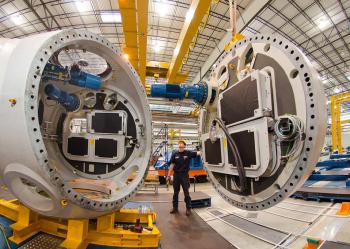Human Resource Managers; how would you like a schedule that your employees will love?
Plant Managers, how about a schedule that adds 40% more potential production hours onto your weekly schedule?
Now that the hook is baited….shall we take a bite?
If that particular schedule calls for you to hire a weekend crew (aka Weekend Warrior Schedule) then you will want to give this idea a pass.
Weekend Warrior refers to a type of staff scheduling strategy for covering 24/7.
At its most basic level, a Weekend Warrior schedule is one that uses two crews to cover all of the weekend work so the rest of the company’s employees don’t have to. There are several variations to this. Here are a few of the more basic models:
- Two weekend crews are used. One crew works 12-hour days on Saturday and Sunday while the other crew works 12-hour nights on Saturday and Sunday. In this way, the Weekend Warrior crews work 24 hours a week and only work 2 days per week. The regular weekday shifts are covered by three other crews: an 8-hour day crew, an 8-hour afternoon crew, and an 8-hour night crew.
- Two weekend crews are used. One crew works 12-hour days on Friday, Saturday, and Sunday while the other crew works 12-hour nights on Friday, Saturday and Sunday. In this way, the Weekend Warrior crews work 36 hours a week and only work 3 days per week. Mondays through Thursdays are covered by two other crews: a 12-hour day crew, and a 12-hour night crew.
- Two weekend crews are used. One crew works 12-hour days on Saturday and Sunday while the other crew works 12-hour nights on Saturday and Sunday. In addition to the 12-hour weekend shifts, each crew will work 2 other shifts of 8 hours at some time during the week. In this way, the Weekend Warrior crews will get a total of 40 hours a week. The regular weekday shifts are covered by three other crews: an 8-hour day crew, an 8-hour afternoon crew, and an 8-hour night crew. Note that the weekend crews will augment the regular weekday crews when they come in for their additional shifts during the week.
While there are several variations to this concept, these three represent the lion’s share of what we have seen out there.
Now that we’ve clarified the type of schedule, let’s look at The Bait & Trap.
The Bait or the thing that makes this type of schedule so attractive is that it appears to satisfy everyone involved. The company needs 24/7 coverage and this provides it. The employees don’t want to work weekends so you hire someone else to do it. This satisfies your existing workforce. Potential employees want a job and will often take any shift to get a foot in the door. This schedule allows people to get that foot in there, provided they are willing to work weekends – done deal.
Here is the problem. The weekend crew will under-perform unless the company over-pays. The Trap is that once this becomes apparent (usually within the first 18 months after implementation) it is too late. Changing the schedule will seem like a take-away and the workforce will fight it tooth and nail.
Let’s look at the “problem” a little more closely. Here are the things we typically hear:
- The weekend crew has a high turnover as the employees leave for better hours.
- The weekend crew has high absenteeism. This job is typically their back-up job. When they go on vacation from their “main” job, they simply call in sick for their weekend job.
- The weekend crew is out of touch with the rest of the plant.
- The weekend crew people move to the weekday crews as soon as there is an opening thus making sure the weekend crew is staffed with the least skilled and newest employees.
- The weekend crew typically performs at about 60% the rate expected of weekday employees.
- When the weekend crew comes in for their 8-hour weekday shifts, the plant becomes overstaffed.
- The weekend crew typically gets a full benefits package. This means a 50% burden rate on the weekday employees equates to a 60-85% burden rate on the weekend crew’s hours.
- Some companies, in an attempt to improve retention and performance on the weekend crews, will up the ante. For example, they may pay forty hours for 24 hours of work. I have seen companies that do this end up paying about twice as much for each hour worked by a weekend crew as they do for a weekday crew.
It looks good so companies go to it. It doesn’t work as planned and companies can’t get rid of it. If that’s not a trap, I don’t know what is.
If you know of anyone that is thinking about implementing a Weekend Warrior Schedule, I recommend that you have them take a look at this posting first.
Let us help you find a customized shiftwork solution that best fits the production needs of your site.
Use our process of employee engagement to ensure the workforce buys into your new schedule.
Call or text us today at (415) 858-8585 to discuss your operations and how we can help you solve your shift work problems. You can also complete our contact form and we will call you.



 To do this, supervisors need consistency. The need to work for the same people so they are getting a consistent message from above. They also need to have people working for them that they know. They need to know who needs extra supervision and who can work well independently; who will perform better when verbally praised and who only works under the threat of sanction. The more often a supervisor matches the workload of his or her crew, the more they know those that work under them.
To do this, supervisors need consistency. The need to work for the same people so they are getting a consistent message from above. They also need to have people working for them that they know. They need to know who needs extra supervision and who can work well independently; who will perform better when verbally praised and who only works under the threat of sanction. The more often a supervisor matches the workload of his or her crew, the more they know those that work under them.